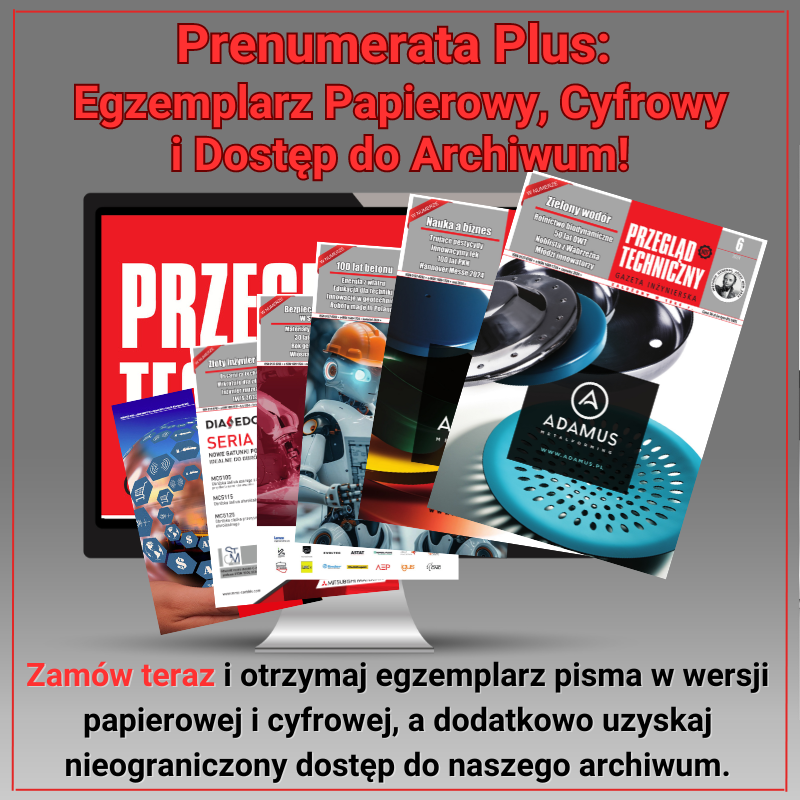One of the tenets of the Lublin University of Technology is its close connection with the region, and after all, the Lublin region is one of the three components of the Central Industrial District (tractors, trucks, armaments, machine parts, aviation). These traditions continue uninterrupted. In our time, new specialties have been added, related to, among other things. With RES technologies and electric drives.
In this field, the Polytechnic has presented interesting inventions and innovations over the years. They are winning more and more awards at exhibitions at home and abroad. We have selected a few showcases of this plethora of solutions from the past year.
COOLING SIMPLE AND PROFITABLE
Part of a home photovoltaic and windmill installation is an energy storage facility that accumulates surplus energy during periods of more intensive power generation. This storage tends to overheat, so it requires effective cooling. A team from the Department of Electric Drives and Machines at the Faculty of Electrical Engineering and Computer Science has constructed a highly ingenious System for cooling using tap water. The authors are: Dariusz Zieliński, Marcin Fronc, Karol Fatyga, Bartłomiej Stefańczak, Maciej Rudawski, Łukasz Kwaśny.
The invention improves the efficiency of a home energy storage cooling system by eliminating fans or coolant pumps, while improving safety by flooding the burning cell with water. A pipe is connected to the cold water inlet, which is in contact with the energy storage and its outlet is connected through a tee to the utility water outlet and the other outlet of the tee to the hydrophore. The pipe is made of polymeric material that breaks down at temperatures above 115°C. The system can stabilize and reduce the water pressure in the home system. A positive effect is the recovery of heat lost in electrochemical cells, so that less energy is used to heat water for domestic purposes. The efficiency of the entire energy storage system is raised by at least 10%. An important consequence is the automatic extinguishing of the electrochemical cell in the event of a fire, without flooding the room in which the battery module is located. The liquid level in the cell tray is controlled by valves and sensors, so there is no danger of electrical short-circuiting of the remaining cells, starting the electrolysis process and releasing explosive hydrogen. The precision extinguishing system minimizes losses to one damaged cell that has suffered an ignition. So far known methods of cooling cells and battery packs use pure water or glycol solution or consist of plate exchangers applied to the side surface of the cell. The main effect of the invention is to extend the lifespan of energy storage by 3 to 5 years. and effective protection of the building from the effects of an electrochemical storage fire.
SMART VAWT
Dr. Ing. Konrad Petrykowski of the Department of Mechanical Engineering, Department of Thermodynamics of Fluid Mechanics and Aerospace Propulsion has a number of valuable patents to his credit. One of the most recently highlighted is Adjustment mechanism for the angle of the blades of a wind turbine with a variable working surface. This, of course, does not refer to large wind farm turbines, but to domestic economic turbines of the VAWT (Virticle Axis Wind Turbine) type , that is, with a vertical axis of rotation. They’re much more comfortable and accommodating. Thanks to the invention, the blade angle adjustment mechanism makes it possible to automatically change the working surface of the turbine. The adjustment mechanism consists of fixing axes attached to the hub, along with sets of blades, the position of which is fixed symmetrically with respect to the plane passing through the fixing axes by a preset angle. The blade set consists of two blades, with the angle adjusted by changing the position of a sleeve mounted on a guide perpendicular to the mounting axis. The bushing is jointed to the linkages, which are articulated to the blades. An electric motor is mounted in the hub, with a gearbox that is coupled to the wheel, on which a cable is wound, which passes through at least three sets of adjustment consisting of guide rollers. By controlling the electric motor, it is possible to adjust the angle of the wind turbine blades, and consequently change their working area and generated power. Such a design ensures that the angle of the turbine blades automatically changes depending on the wind speed, without stopping the turbine. This improves the usability of the turbine and reduces maintenance time. An adjustment mechanism protects the turbine from damage in the event of high-speed winds. The turbine is capable of operating at low and high wind speeds. The author has provided a very high VI level of technological readiness. A prototype was tested under near-real conditions (wind tunnel). The process of arriving at the prototype itself is noteworthy: a 3D model study of the turbine rotor was conducted, a CAD geometric model of the turbine was developed, and the rotor prototype was 3D printed. The popularization of small wind turbines is made easier precisely because of the possibilities offered by VAWT technology. Potential recipients of the invention could be companies that manufacture small turbines, and RES assembly companies looking to expand their business to include the manufacture and assembly of small wind turbines. The author expects to sell the production license to the rights held by the Lublin University of Technology. It is also possible to establish a special purpose vehicle with the participation of the University of Technology.
Weir.



